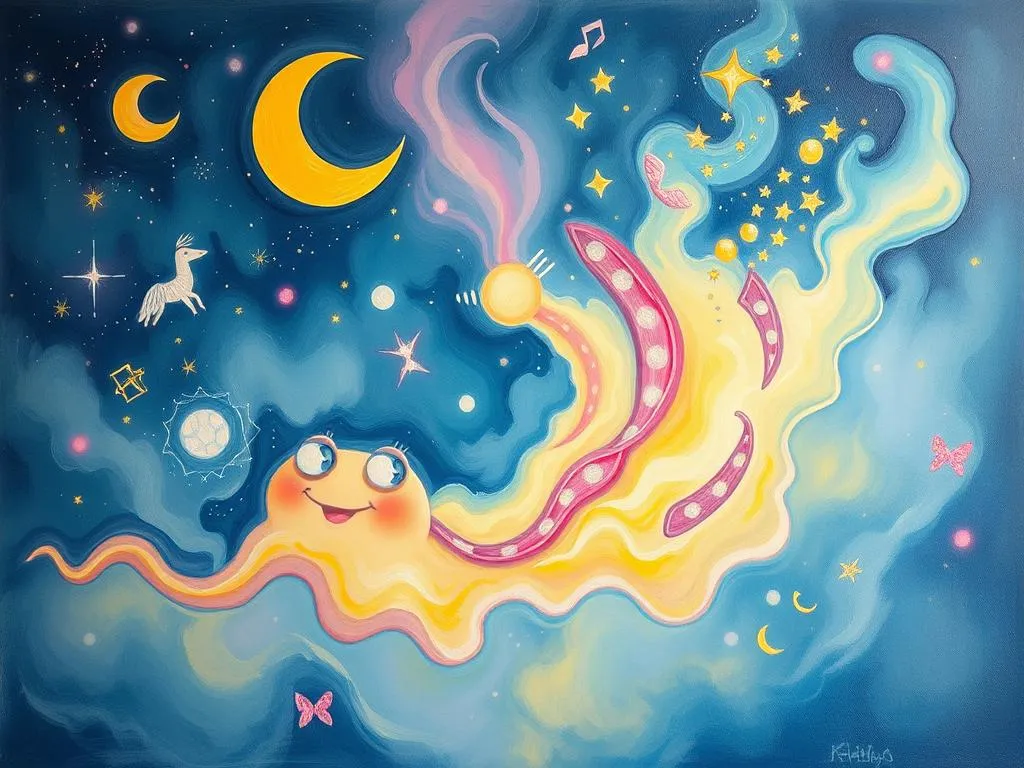
Have you ever woken up in a cold sweat, your heart racing from a dream that felt all too real? Or perhaps you found yourself floating above a familiar landscape, a sense of freedom washing over you. Dreams are intriguing, mysterious, and often perplexing—like an encrypted message from our subconscious. As we navigate the labyrinth of our nightly visions, understanding the symbolism can be incredibly rewarding.
In a world where our waking lives are often dictated by responsibilities and expectations, dreams offer us a glimpse into our deepest desires, fears, and unresolved conflicts. Whether steeped in cultural significance or psychological insights, the symbols we encounter during sleep can illuminate pathways for personal growth and self-discovery. So, grab a cup of tea, settle in, and let’s delve into the enchanting world of dreams together.
The Hidden Language: Decoding Dream Symbols
Dreams communicate through symbols, each carrying its own weight, context, and meaning. Just like a painting, where colors and shapes combine to create an emotional experience, dream symbols can be interpreted in various ways depending on personal and cultural backgrounds. Here are some common symbols and their potential meanings:
-
Water: Often representing emotions and the unconscious mind, water can take on different forms in dreams. A calm lake may signify tranquility, while turbulent waves could indicate emotional turmoil. In various cultures, water symbolizes purification and rebirth, making it a powerful element in dream analysis.
-
Flying: The sensation of flying is often tied to freedom and escape. It suggests a desire for liberation from life’s constraints or a yearning for higher perspectives. Psychologically, flying dreams can reflect confidence and success, but they might also indicate a need to confront fears about losing control.
-
Being Chased: This common dream can symbolize anxiety or feelings of being overwhelmed. The pursuer may represent an unresolved issue in your life or a fear you’re trying to avoid. Culturally, being chased might reflect societal pressures or expectations that you feel are closing in on you.
-
Teeth Falling Out: A prevalent dream that many experience, it often signifies concerns about self-image or the passage of time. In various cultures, losing teeth can symbolize aging or a fear of losing control over one’s life. It can also represent a desire to communicate better or fears of being unheard.
-
Doors: Doors in dreams often symbolize opportunities or transitions. A closed door could indicate missed chances or feelings of confinement, while an open door might suggest new possibilities or a willingness to embrace change. The state of the door can reflect your current mindset about facing new challenges.
Understanding these symbols can be a profound step toward unlocking the hidden messages within your dreams. As you reflect on these meanings, consider how they resonate with your personal experiences and emotions.
Dreamscapes in Motion: Scenarios to Ponder
Dreams unfold like stories, often featuring vivid scenarios that resonate deeply with our waking lives. Here are a few dream situations that many people encounter along with their symbolic interpretations.
-
The Exam You Didn’t Study For: You find yourself in a classroom, staring at an exam paper filled with questions you can’t answer. This scenario often reflects performance anxiety or feelings of inadequacy, especially in professional or academic settings. It’s a nudge from your subconscious to address fears about not measuring up.
-
The Sudden Flood: You’re standing in your home, and suddenly water begins to rise around you. This dream can symbolize being overwhelmed by emotions or life circumstances. Culturally, floods often represent a loss of control, and in many traditions, they signify a cleansing or a new beginning. It’s a call to confront and process your feelings instead of allowing them to drown you.
-
Meeting a Long-Lost Friend: You encounter someone from your past, sharing memories and laughter. This dream scenario may represent nostalgia or unresolved feelings. It can also indicate a desire to reconnect with parts of yourself that you’ve neglected. A reunion in dreams is often an invitation to reflect on your growth.
-
Being Naked in Public: You suddenly realize you’re naked in a crowded place, and a wave of embarrassment washes over you. This dream often signifies vulnerability or fears of exposure. It can reflect anxieties about how others perceive you or a worry that you’re not living authentically. Embrace this dream as an opportunity to explore areas where you might feel insecure.
-
Driving an Out-of-Control Vehicle: You’re behind the wheel, but the car won’t stop or steer properly. This dream can symbolize loss of control in your life, whether in relationships, work, or personal matters. It may serve as a reminder to take back the reins and reassess where you’re headed.
Each of these scenarios opens a dialogue between your conscious and unconscious minds, urging you to explore the underlying themes in your life. As you reflect on these experiences, consider what they reveal about your current emotional landscape.
The Journey Within: Cultivating Personal Growth
Dreams are not just fleeting images; they are powerful tools for personal growth. When we take the time to analyze and reflect on our dreams, we can uncover valuable insights that aid in our development. Here are some practical strategies to harness the wisdom of your dreams:
-
Keep a Dream Journal: Recording your dreams as soon as you wake up can help you capture the details before they fade. Note the symbols, feelings, and scenarios you experienced. Over time, patterns may emerge that provide clarity about recurring themes in your life.
-
Engage in Reflection: After journaling, take a moment to reflect on what the dream might mean to you personally. Ask yourself questions like: What emotions did I feel? What issues am I currently facing? How do these symbols relate to my waking life? This practice can deepen your understanding of yourself.
-
Explore Cultural Contexts: Research the cultural significance of the symbols you encounter. Different cultures interpret symbols in unique ways, and understanding these perspectives can broaden your insights. For example, many indigenous cultures view dreams as messages from ancestors, providing guidance and wisdom.
-
Practice Lucid Dreaming: If you’re interested in taking control of your dreams, consider practicing lucid dreaming. This technique allows you to become aware that you’re dreaming and even manipulate the dream environment. It can be a powerful way to confront fears or explore desires actively.
-
Seek Professional Guidance: If certain dreams are particularly troubling or recurring, consider discussing them with a therapist or a dream analyst. They can offer insights and tools tailored to your specific experiences, helping you understand and navigate your emotional landscape.
By embracing the journey within, you empower yourself to recognize patterns, confront fears, and celebrate triumphs. Dreams are a pathway to self-discovery, inviting you to explore the depths of your unconscious mind.
As we conclude our exploration into the world of dreams, remember this: Your dreams are a mirror reflecting your inner landscape. Each symbol, each scenario, carries a message waiting to be deciphered. Embrace the wisdom they offer, and allow them to guide you on your path of personal growth.
When you awaken each day, carry the insights from your dreams with you. They are not merely fleeting thoughts but powerful allies in your quest for understanding and fulfillment. Reflect on your dreams, engage with their symbolism, and watch as they illuminate your journey through life.







